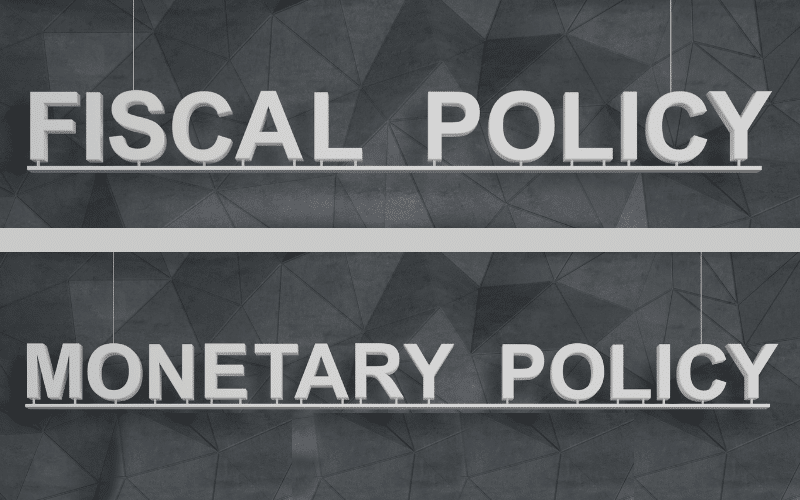
Central banks use monetary policy in their efforts to steer economic growth in countries. Monetary policies determine how much money is circulated in an economy during a specific period.
While it may sometimes achieve the same effect as monetary policy, fiscal policy has to do with the taxation mechanisms adopted by governments and how the collected taxes are spent.
How do fiscal policies function?
Governments set taxes and incentives to regulate economic growth with specific targets.
For example, governments may lower taxes to enable more businesses to employ more people.
Lower taxes on consumer goods also promote consumer expenditure and increase incomes. If the economy starts to heat up due to high incomes, taxes may be raised to control inflation and stabilize the economy.
Ways of implementing monetary policy
Discount rate: Central banks employ this tool as a way of managing liquidity in an economy. Discount rates are usually issued to all banks operating within a jurisdiction. The rate can be lowered or raised to control borrowing among banks. The rate change effectively determines how much money will be available for lending, consequently, controlling inflation.
Reserve Requirement: Each bank is obligated to set aside the minimum amount of money in a reserve that central banks monitor. Most of this money is what will be availed to businesses in the form of loans. By setting this threshold, central banks can determine how much money circulates in an economy.
Open market operation: As the name suggests, this tool has an element of trade. Central banks are directly involved in the purchase and sale of treasury bonds, thereby controlling how much of these assets can be traded in by commercial banks.
When government securities are bought in large volumes, their value increases, and commercial banks stock them up as a result. However, if they are sold in large volumes, their value reduces, and commercial banks shift their interest to other investments such as lending more businesses.
Types of fiscal policy
Expansionary: This involves taking measures that can catalyze the expansion of the economy. This is done by increasing the amount of money in an economy. Examples include reducing taxes, increased government spending, etc.
Contractionary: The tool may be employed when the economy is growing too rapidly, causing a negative effect.
When the economy heats up, too many businesses may open up, inflation may rise unsustainably, and investors become reluctant to scrutinize their investments before committing their money.
Even worse, bubbles are common during such economic booms. Government usually raises taxes to safeguard against overexpansion and introduces strict regulatory pressures to limit liberal tendencies in an economy.
Types of monetary policy
Contractionary: The policy aims to counter inflationary pressures. For example, when bank interest rates are increased, it usually results in reduced lending, hence less money in the economy.
Expansionary: The approach catalyzes economic activity by increasing the amount of money available in the economy. One such tool is the lowering of interest rates to encourage borrowing.
Advantages of monetary policies
Controlling inflation control is good for the economy: Inflation encourages investors to put in more effort and expand their investments, hoping that their portfolios will grow in value over time.
Using monetary policies, governments can keep economies growing while keeping things in check to ensure that things do not grow out of control into hyperinflation, damaging an economy.
Benefits from institutional memory: Central banks are established institutions with continuity of practice, which ensures that the ongoing policies do not get “short-circuited” midway through implementation periods due to regime changes. Many regimes avoid interfering with central banks because of the adverse effects it may cause.
Have a direct and practical means of implementation: Central banks have the legal backing to ensure that the measures they take are put into practice. These policies are usually implemented at a macro-scale (institutional level) and are therefore easy to monitor.
Devaluation is good for the balance of trade: By regulating the amount of money circulating in economies, central banks can either strengthen or devalue currencies. It affects not only the domestic economy but also has an impact on the international market.
For example, devaluation makes a country’s exports more competitive, giving exporters an edge and increasing foreign currency inflows.
Disadvantages of monetary policies
It takes a long time to achieve results: Monetary policies are implemented over wide administrative jurisdictions. When introducing new policies, it usually finds previous policies still in action.
While the transition to the new policies may be immediate on paper, the residual effects of previous policies usually take time to dissipate.
For example, businesses that borrowed in the era of high interest rates may not be able to expand immediately even when lower interest rates have been introduced.
Technical handicaps of interest rates: Interest rates may at times fail to achieve the desired results. For example, low interest rates may cause hyperinflation.
Advantages of fiscal policies
Can be targeted to achieve specific sectoral results: Fiscal policies usually involve taxation and incentivization. The policies may target specific segments of the economy, thereby achieving effective outcomes that may, at a time, prove better than monetary policies. For example, tariffs on agricultural imports ensure that local farmers benefit.
Take a shorter time to actualize: Taxation and incentives have direct and almost immediate effects on the costs of business operations, goods, and services.
Disadvantages of fiscal policies
They are prone to political manipulation: Different administrations may implement specific tax regimes with particular predisposed political intentions, often to the detriment of the economy.
Can cause budgetary constraints: Poor tax regimes may lead to shortfalls in revenue collection by governments.
Tax incentives may be abused: shrewd businessmen may use some tax incentives to find shortcuts that may hurt the local economy. For example, incentives on microchips may make some local computer manufacturers stop local manufacturing and import cheap microchips.
Bottom line
Monetary and fiscal policies are employed to streamline economic growth. Moreover, the two concepts may achieve similar results. Knowing how these tools affect business is key to planning for growth and resilience in business.








Leave a Reply